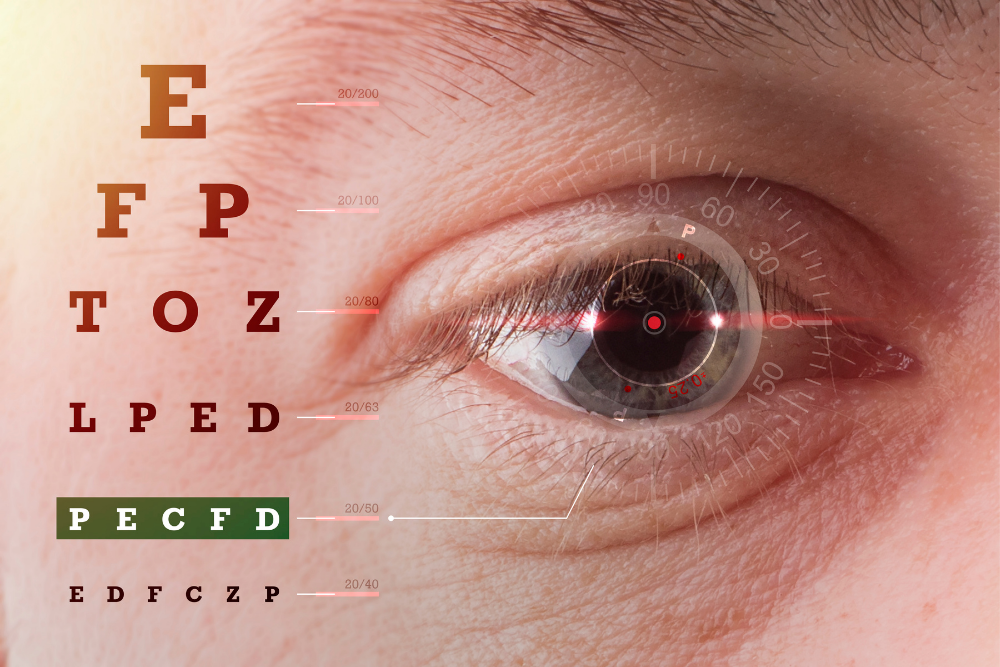CASE REPORT: IMPROVING VISION IN A PATIENT WITH MACULAR COLOBOMA
Background:
Coloboma is a congenital deficiency which a part of the eye tissue is missing due to abnormal process of the formation of the eye in the fetus. It can appear in the retina area or in the anterior segment of the eye, the cornea and the pupil.
When the coloboma appears retinally in the area responsible for central vision (macula and fovea), it is likely that there will be an impairment of central vision and difficulty in seeing colors.
We were approached for treatment by a 33-year-old man with a visually impaired certificate. He has been receiving a disability pension from the National Insurance Institute since childhood, due to his poor vision condition. He was very motivated to improve his vision.
His main motivation is improving quality of life and receiving a driver’s license!
The Diagnosis:
Congenital retinal disease: Macular Coloboma
Myopia
Astigmatism
Nystagmus
Slight and irregular head tilt.
Refraction:
Right: -1.00/-0.75*110
Left: -2.50
Visual acuity with correction before treatment:
Right:6/21 -1 J3
Left: 6/18 -3 J2
Contrast Sensitivity:
Saw only one spatial frequency in the F.A.C.T Sine Wave contrast test (Vision Analyzer Stereo Optical)
Distance Visual acuity with correction after 40 sessions:
Right: 6/12 (minus 2)
Left: 6/12 (minus 2)
Near Visual Acuity:
An improvement of a line in each eye.
50% improvement in contrast sensitivity.
He felt a subjective improvement in vision, reading books from a greater distance. Prior to the treatment, he read from a distance of 10 centimeters and today reads from a natural position of about 25 centimeters.
Finds little objects on the floor, feels significant relief working in front of a computer.
Took a huge step towards getting qualified for a driver’s license.
He is mid-treatment and awaiting patiently and excitedly for the next test.
RevitalVision’s treatment is clinically proven to enhance vision in people with low vision due to a variety of eye diseases.
The treatment enables significant vision improvement, in people with low vision, through computer-based vision training program, which is done on a home computer, without surgery or medication.
How does RevitalVision improve vision in patients with retinal diseases?
RevitalVision is clinically proven (in controlled randomized studies) to improve vision in adult amblyopia and has received FDA clearance for this treatment indication. Later, controlled randomized trials proved its efficacy in improving uncorrected vision in patients with minor refractive error, enabling the brain to better process blurred images into sharper ones. In other words, improved image processing can compensate for some degree of blurred image, transferred from the retina.
The treatment exploits residual neuroplasticity existing in adults, and through repetitive performance of controlled patient-specific visual tasks, creates a perceptual learning process.
Possible explanation:
It is possible that lack of prolonged effective cortical stimulation, caused by a blurred or damaged image transferred from the retina to the brain, results in reduced cortical activity.
Thus, in addition to the anatomical damage to the eye, there is a secondary gradually -evolved damage to the quality of the image processing in the brain.
Similar to amblyopia, effective stimulation and perceptual learning process enables significant improvement in cortical activity, resulting in improved visual acuity and contrast sensitivity, despite the absence of any anatomical improvement or changes during the course of the disease.
We hope that future controlled randomized studies will replicate these encouraging reports, and may provide answers to our question.
Learn more about improving poor vision due to eye diseases
Back to Blog

